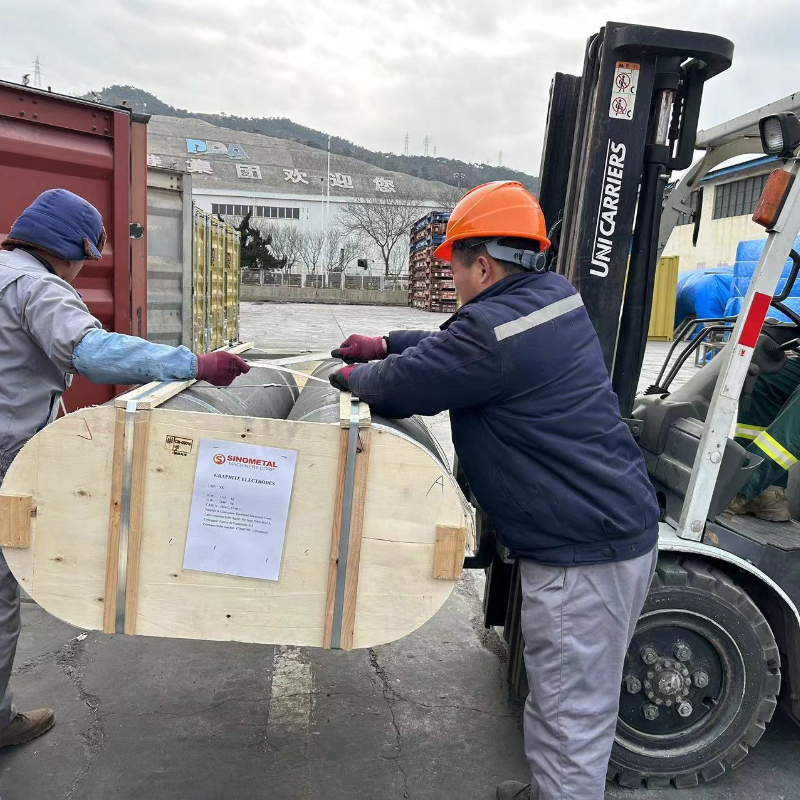The main raw material for the production of graphite electrodes is petroleum coke (including needle coke). A small amount of asphalt coke can be added to the production of normal power graphite electrodes. The binder is coal pitch.
The production process of graphite electrodes is shown in the figure. The main production process is as follows:
(1) There are many production processes and long production cycles. The production cycle of ordinary power graphite electrode is about 45 days, and the production cycle of ultra-high power graphite electrode is more than 70 days. Joints that require multiple impregnation have a longer production cycle.
(1) Calcination
(2) High energy consumption, 1t ordinary power graphite electrode needs to consume about 6000kW · h, thousands of cubic meters of gas or natural gas, metallurgical coke particles and metallurgical coke powder (secondary energy) about 1t.
Petroleum coke or asphalt coke needs to be calcined, and the calcination temperature should reach 1300 °C to fully remove the volatile matter in the raw material and improve the true density and conductivity of the coke.
(3) The production process of graphite electrode requires a large number of special mechanical equipment and kilns with special structures, and the construction investment is large and the payback period is long.

(2) Crushing, screening and batching will
(4) A certain amount of dust and harmful gases will be generated in the production process of graphite electrodes, so it is necessary to take perfect environmental protection measures for ventilation and dust removal and elimination of harmful gases.
After calcination, the raw materials are crushed and screened into aggregate particles of the specified size, and some of the raw materials are ground into fine powder. After weighing according to the recipe, the mixture of various particles is assembled.
(3) Mixing
Explore more:How does UHP Graphite Electrode compare?In the heated state, a quantitative mixture of various particles is mixed with a quantitative amount of binder and mixed into a plastic paste.
(4) Shape
Under the action of external pressure (compression molding or extrusion) or vibration (vibration molding), the paste is pressed into a blank with a certain shape and high density.
(5) Baking
Put the billet into a specially designed high-temperature furnace, cover the billet with filler material (coke powder or river sand), and gradually heat up to about 900~1100 °C to carbonize the binder, so as to obtain baked goods.
(6) Soaking
In order to improve the bulk density and mechanical strength of the product, the roasted product is loaded into an autoclave, and the liquid impregnating agent is pressed into the pores of the roasted product. After maceration, it should be baked again. In order to obtain high-density, high-strength joint blanks, it is necessary to repeat the impregnation 2~3 times.
(7) Graphitization
The calcined product is loaded into a graphitization furnace (covered with insulation material) and heated directly by electricity. The physical and chemical properties of artificial graphite electrodes are obtained by transforming the calcination product into a graphite structure.
(8) Machining
According to the requirements of use, the graphitized blank is subjected to surface turning, end face machining, and screw hole processing for connection, and then the connecting joint is processed.
(9) The finished product will be packed after passing the inspection.more




Comments
Please Join Us to post.
0